William Holman Hunt 1827-1910

The man behind the ginger beard
William Holman Hunt was formerly known as Hobman Hunt, changing his name upon the discovery that a clerk had misspelled his name on his baptism certificate. He was an English painter born in London in 1827 and came to be known as co-founder of the Pre-Raphaelite Brotherhood.

William Holman Hunt
William began working at just 12 years of age as an office clerk. Five years after, his parents agreed to enroll him at the Royal Academy art school (in 1844). It was there that he became acquainted with John Everett Millais and Dante Gabriel Rossetti which lead to them forming a Pre-Raphaelite Brotherhood. These talented artists valued the straightforwardness of line and huge ranges of impressive shading found in the early Italian painters before Raphael.
Hunt went to create art rich in detail and saturated with colour. His work was deeply naturalistic depicting both themes from modern urban and rural life and religious subject matter.
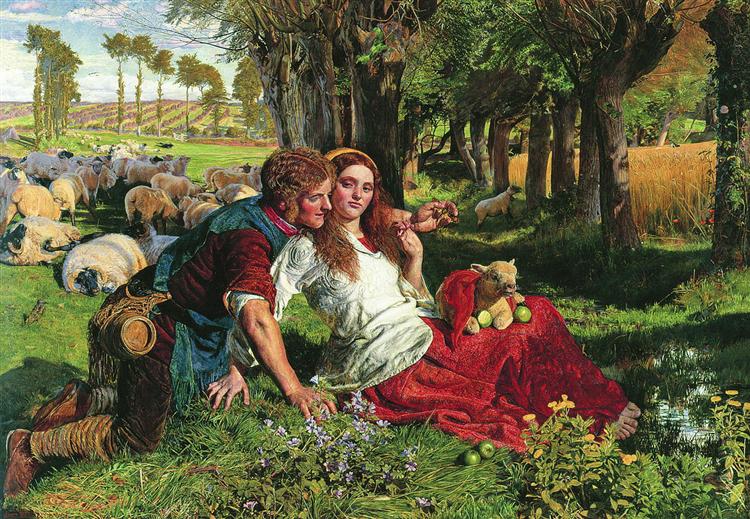
Hunt believed that the job of the artist was to depict things truthfully while using art to promote and uphold moral integrity. In turn, he was committed to a less romantic, more honest art, and, in looking back to a period before the High Renaissance, Hunt sought divine inspiration in the purity and symbolism of medieval and religious fables found in 15th-century Florentine and Sienese painting.
His most important works
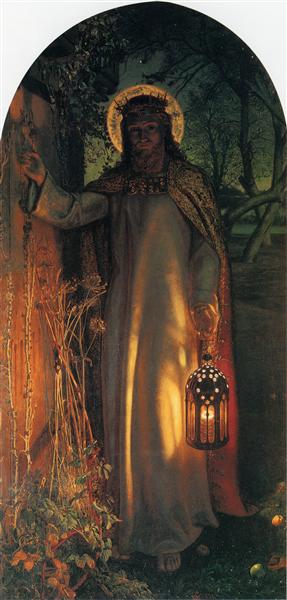
The Light of the World
Hunt’s first public success brought him international fame with The Light of the World (1854), a contemporary portrayal of Christ.
He remarked in a letter to his friend W.B. Scott:
“I painted the picture with what I thought, unworthy though I was, to be divine command and not simply a good subject.”
Hunt’s paintings were much more than material constructions but they were moral parables too. In this example, we see clearly the manipulation of light in the picture that combines with the idea that only faith in Christ can deliver the sinner from the darkness.
His fine brush technique combined with varnish and oil paints of the work took on “the quality of glass” and in so doing enhanced “the sense that the image is [being] viewed through a window rather than on a plane.”
The Awakening Conscience.
Another one of his famous works depicts a mistress rising from the lap of her lover facing towards nature and light said to be enlightened by a sudden realization of Christian truth. Salvation is a reoccurring theme in Hunt’s work, symbolized here by a shaft of light falling at the bottom right of the scene in an otherwise darkened interior picture frame.
Seen with the arching panel Hunt’s preference of working onto a brilliant white (rather than black) base, which he referred to as a “tempera” ground: that is an attempt “to treat the canvas support like a gessoed, quattrocento panel”, according to the art historian Carol Jacobi.

I find the details of this painting from top to bottom astounding. Within the details there are numerous analogies; from the reflection of the mirror to the window looking outside, the detail of the piano, and the table reflection.
Looking closer one might see the gentleman’s discarded glove which was said to be an allusion to how easily the woman could be cast aside. To the bottom left rests a cat which is toying with a helpless, broken-winged bird.
The picture is lent a distinctive style by the elegant and finely detailed interior, a style familiar from contemporaneous works (such as Robert Tait’s depiction of Carlyle’s House).
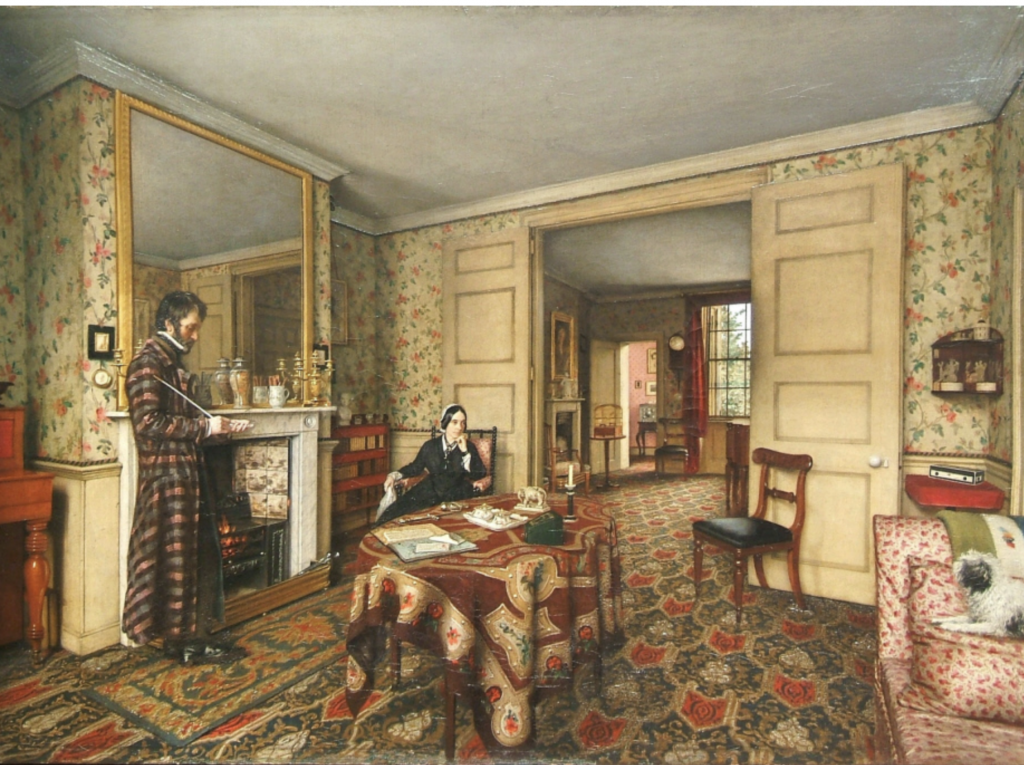
Robert Scott Tait (1857 – 1858 )
Other works
His paintings are characterized by hard colour, meticulous detail, and an emphasis on moral or social symbolism; their moral earnestness made them extremely popular in Victorian England. Hunt spent two years in Syria and Palestine painting biblical scenes, such as The Scapegoat (1855). Here he depicts a goat isolated on the shores of the Dead Sea.
Hunt had strong Christian beliefs and used actual locations, adding truth to his works. Many were in the middle-East to restage biblical parables and rituals in his canvases.
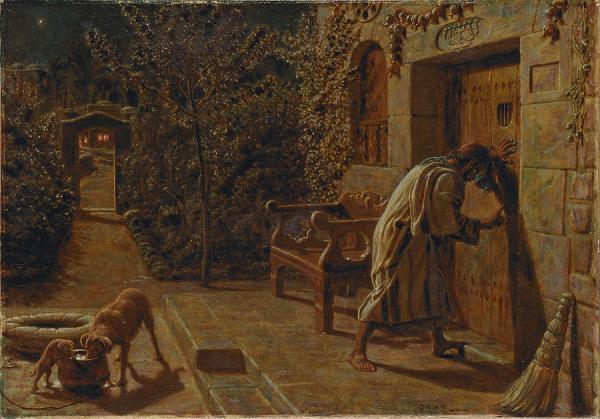
This artwork became the last entirely new religious subject the artist painted and bears resemblance to The Light of the World (1854). Both paintings, then, create images of divine grace. This one presents an image of a man trying to return to his divine father and divine homeland. The man seeks God, and God welcomes the seeker.
For as Jesus tells his disciples: “Ask, and it shall be given you; seek, and ye shall find; knock, and it shall be opened unto you.”
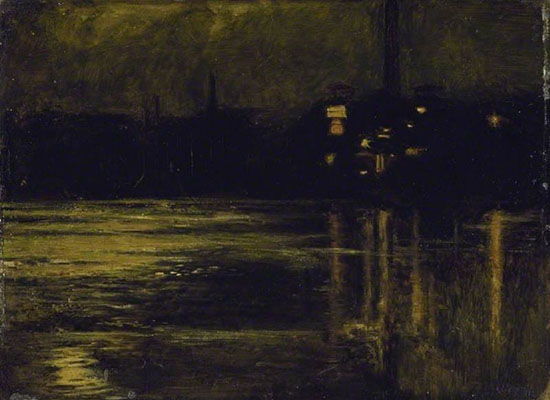
Though most of Hunt’s paintings were symbolic or figural, this example deviated. His depiction of the Thames is notable for its subdued, colour palette and subtle atmosphere. A majority of the composition has been occupied by the surface of the river which the reflections and texture in the water.
Future artistic undertakings were cut short once Hunt’s eyesight deteriorated and he suffered a serious asthma condition. Hunt visited the Middle East one last time in 1892 and in 1905 he was awarded the Order of Merit and an honorary Doctorate of Civil Law by Oxford University. Hunt died in London in 1910.
Whether he was painting the natural world or moralistic messages we can see the belief of the Pre-Raphaelite Brotherhood expressed through his creative works.
Works Cited:
https://ezproxy.capilanou.ca/loginurl=https://search.credoreference.com/content/entry/ebconcise/hunt_william_holman/0?institutionId=6884
https://www.theartstory.org/artist/hunt-william-holman/#nav
https://www.1st-art-gallery.com/William-Holman-Hunt/William-Holman-Hunt-oil-paintings.html
https://www.wikiart.org/en/william-holman-hunt
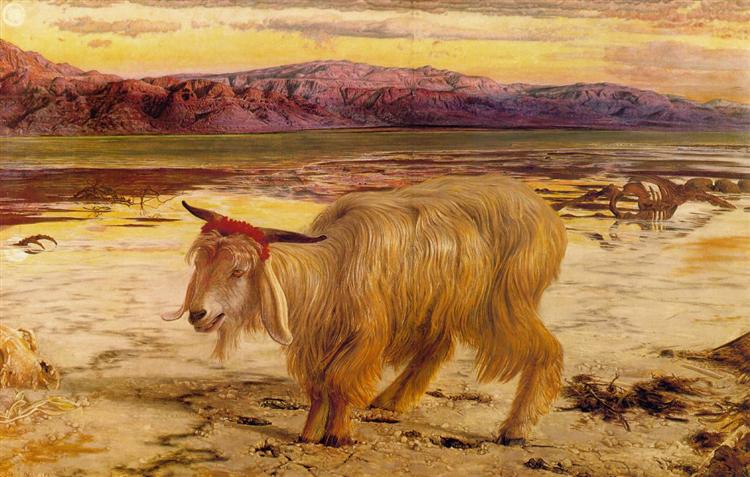

2 replies on “Realism, Pre-Impressionism, & Pre-Raphaelites”
Joanne,
I’m getting in touch with everyone today to give them their real marks for the mid term quiz. You scored a 40/50 which translates to an A-. Congrats.
Jeff
Joanne,
Wow excellent work on Holman Hunt here! You went beyond the expected with your deep research, anecdotes, and personal thoughts and insights into the artist in question. I can also tell you have been greatly inspired by him as it comes through in your wonderful writing. Great Job!
Jeff